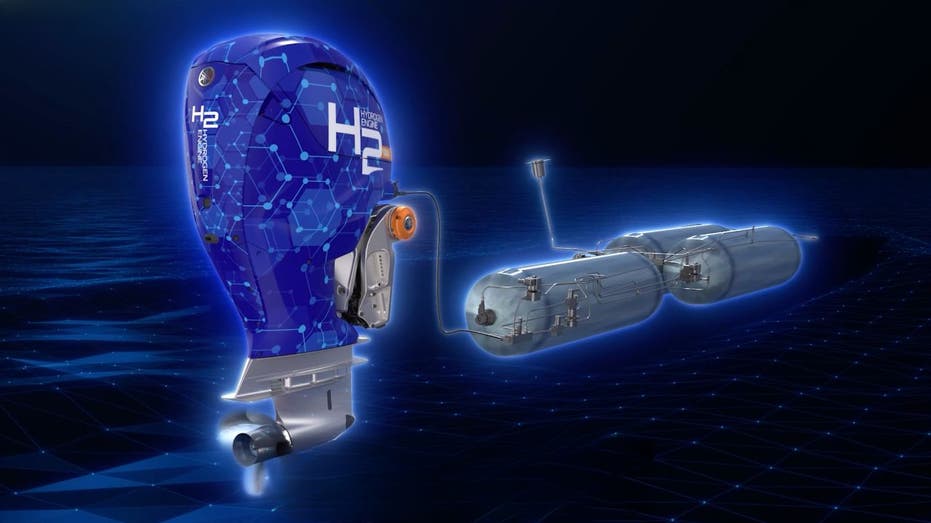Unveiling the First Hydrogen-Powered Outboard Engine Boat

Imagine a world where your boating experience is powered not by traditional gasoline but by clean, eco-friendly hydrogen fuel. This innovative vision is becoming a reality as Yamaha, in collaboration with Roush Industries and Regulator Marine, is developing the groundbreaking world’s first hydrogen-combustion outboard engine. Their goal? To revolutionize boating by making it greener and more sustainable.
Yamaha’s Commitment to Carbon Neutrality
Yamaha is on a mission to achieve carbon neutrality by 2050, utilizing a combination of electric power, alternative fuels, and cutting-edge hydrogen technology. The hydrogen-powered outboard engine represents a significant step towards this ambitious goal, demonstrating the company’s commitment to a cleaner future.
-
Apple Unveils AirPods Pro 3 with Advanced Noise Cancellation, Real-Time Translation, and Fitness Tracking

-
The Ultimate Guide to Breathing New Life into Your Old Android Device

- Easy Guide to Copying and Pasting on a Chromebook
-
Apple Raises Bug Bounty Rewards to $2 Million to Combat Sophisticated Exploits

Milestones in Hydrogen Fueling
To bring this vision to life, Yamaha modified a Regulator Marine 26XO boat and took it to a hydrogen fueling station, marking a significant milestone in the project. The 26-foot vessel is equipped with a modified version of Yamaha’s robust 450hp XTO outboard engine, now powered by gaseous hydrogen instead of gasoline.
Matt Van Benschoten from Roush, a key player in the project, described the moment as “a big milestone,” highlighting the complexity of designing and integrating the hydrogen fuel system to ensure safety and functionality.
Innovative Engineering for Hydrogen Compatibility
Yamaha started with their largest offshore outboard engine, the XTO 450, and made several modifications to accommodate hydrogen fuel. This included adjustments to cylinder heads, fuel lines, and injectors to optimize the engine’s performance with hydrogen’s unique properties, while retaining much of the original gasoline engine design.
The boat was specially modified to house three high-pressure hydrogen tanks, each capable of storing fuel at an impressive 700 bar. These tanks are ingeniously designed to expand as they fill, prompting Yamaha’s engineers to create innovative mounting solutions that allow for safe movement without compromising functionality. While Yamaha hasn’t released the gasoline equivalency of the hydrogen tanks, they are dedicated to maximizing capacity for marine applications.
Safety Features That Prioritize Boater Security
Safety is a top priority in the development of this hydrogen-powered boat. It utilizes a standard hydrogen refueling connector and adheres to stringent safety protocols to ensure a secure and efficient refueling process. Advanced monitoring systems provide real-time feedback between the boat and fueling station to detect tank conditions, automatically halting refueling if temperatures rise too high.
Inside the vessel, multiple hydrogen detectors constantly monitor gas levels. If hydrogen accumulation reaches a concerning level, the system alerts the captain and, if necessary, shuts down the engine while venting the gas safely. Additionally, Roush has implemented a specialized ventilation system designed to release any leaked hydrogen from the highest points of the boat, as hydrogen is lighter than air.
Promoting Hydrogen Infrastructure in the Marine Industry
Yamaha first showcased this innovative hydrogen outboard engine at the Miami Boat Show and subsequently took it to the SEMA Show in Las Vegas to spark discussions within the automotive and marine industries about hydrogen infrastructure. So far, they have built two boats: one for display purposes and another for rigorous real-world testing. The team is now focused on refining the system, conducting safety tests, and determining the boat’s range on a single tank of hydrogen, while also striving to make refueling faster and more convenient.
Future Developments in Hydrogen Technology
Currently, the cylindrical hydrogen tanks take up considerable space, limiting the amount of hydrogen the boat can carry. However, Yamaha is exploring alternative tank designs that could provide a more efficient fit within the boat’s hull. The supply chain for high-pressure hydrogen systems is still developing, but with partnerships like those with Roush and Regulator Marine, Yamaha is navigating these challenges effectively.
Yamaha’s commitment to clean marine propulsion is further underscored by its recent acquisition of electric outboard manufacturer Torqeedo, signaling an ongoing dedication to exploring various sustainable technologies.
A Bright Future for Hydrogen in Boating
Ben Speciale, president of Yamaha’s U.S. Marine Business Unit, emphasized the significance of their hydrogen outboard concept, stating that they are continually learning how to optimize its performance. He believes that a multi-technology approach is vital for creating cleaner products in the marine sector, with hydrogen representing a promising avenue within their product lineup.
Yamaha’s hydrogen outboard project is paving the way for a reimagined approach to boating that prioritizes safety, practicality, and sustainability. While there is still work to be done, this collaboration is making strides toward cleaner waters and greener adventures. If hydrogen technology succeeds in the marine industry, it could transform the entire landscape of boating.
What are your thoughts on the future of hydrogen-powered outboard engines? Do you believe they represent a significant advancement in boating technology, or do they still have a long way to go? Share your opinions with us.
For more tips and updates on technology and security, subscribe to our newsletter for the latest insights.
